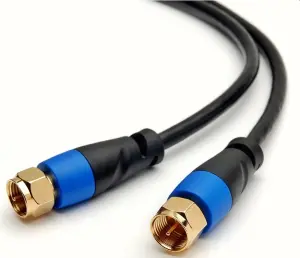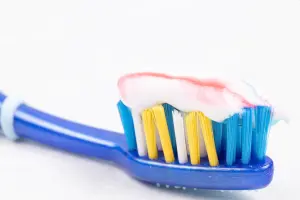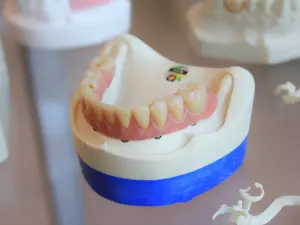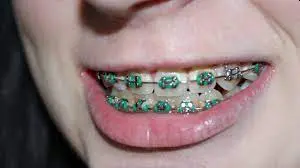Understanding Carriage Bolts
Bolts come in many shapes and sizes. there are round and square, long and short, and even flat and round. They come in a variety of metals such as steel, aluminum, copper, and brass. Currently, let’s review carriage bolts
1. What are carriage bolts?
Carriage bolts are type of fastener that are often used in construction and in the automotive industry. They are made up of a head, a squared section and threaded shaft.
They are used to attach two pieces of wood together or metal and wood pieces or two pieces of metal together. Finally, they are designed to be tightened with a nut.
2. What are the types of carriage bolts?
There are many types of carriage bolts. Carriage bolts come in different lengths, and they also have different heads. The most common are the carriage bolts with hexagonal heads and mushroom heads.
They can be made of different material. The most two common types are galvanized steel and stainless steel, which are very resistant to corrosion.
3. How do they function?
A carriage bolt is a fastener that is typically used in heavy construction. It is a type of bolt that has a head on one end and a shank that is threaded on the other.
The shank is the part that actually goes into the wood or the metal pieces to be held together. The part are held by tightening a nut on the shaft using a wrench.
4. How to use carriage bolts?
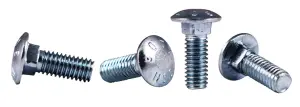
A carriage bolt is a type of bolt that has a short and large head on one end and a long ans thin shaft on the other.
First, you need to have holes in the 2 parts you want to held together. Make sure the holes are slightly lager than the shaft diameter.
Then, pass the bolt shaft through the 2 holes. Insert a nut on the shaft and start tightening by hands. Then use a wrench to tight the nut firmly.
5. What are the benefits of using carriage bolts?
Carriage bolts are a popular choice because they are strong, reliable, and easy to use. They are also a good option for those who want to use quick and easy methods for attaching materials.
There are a few reasons why carriage bolts are a good choice for construction. First of all, they are very strong. This means that they can hold a lot of weight and they are also resistant to bending. This means that they can be used to attach large pieces of equipment or materials to other pieces of equipment or the ground.
Another benefit of carriage bolts is that they are easy to use. This is because they have a simple design and they are easy to attach.
6. What are the disadvantages of using carriage bolts?
Although carriage bolts are widely used in construction, there are some disadvantages to using them. For one, the mushroom head type can be difficult to remove because there is no way to hold them with a tool on that side.
Additionally, carriage bolts require space around them because they need to be tighten with a wrench. It cloud be a challenge to use them in limited space, such as the ones on vehicles for instance. Socket extension bars or swivel sockets may be necessary in those cases.
7. What are the precautions to take ?
When using carriage bolts, there are a few precautions that should be taken in order to ensure a safe and successful installation.
First and foremost, the correct size of the bolt should be used. This will depend on the thickness of the material being installed and the strength of the bolt.
Secondly, it is important to make sure the bolt is properly tightened. Make sure to tightened to the specified torque.
Last but not least, it is important to check for any signs of wear or damage. If there are any signs of wear or damage, the bolt should be replaced.
8. What are the possible problems with using carriage bolts?
The most common problem with carriage bolts is that they can become loose. This can happen for a variety of reasons, but the most common is that the bolt becomes loose because it was not tightened enough when it was initially installed.
Another common problem with carriage bolts is that they can become bent. This can happen when the object being fastened is moved around a lot or if the bolt becomes bent while it is being tightened.
Both of these problems can lead to the bolts becoming loose and potentially coming off the object they are attached to. If this happens, it can be a serious safety hazard.
It is important to use a bolt that is the correct size for the job. If the bolt is too big, it will not fit properly into the hole in the object being fastened. If the bolt is too small, it will not be able to hold the object in place.
It is also important to make sure that the bolt is tightened properly. Carriage bolts can be a useful way to attach trim, but it is important to take care when using them.
9. How to make sure that carriage bolts are safe to use?
When it comes to using carriage bolts, there are a few things that you need to know in order to ensure that they are safe to use.
First of all, make sure that the bolts are of the correct size for the application.
Secondly, make sure that the bolts are tightened properly. Too much torque can cause the bolts to break.
And finally, make sure there is a good contact between the 2 parts to be tighten together before starting tightening the nut. If not, the parts could slip suddenly during tightening the nut. It could cause security issues.
By following these tips, you can ensure that your carriage bolts are safe to use and that the tighten parts will stay in place.
10. Conclusion
Understanding carriage bolts is important for anyone using them, mostly on vehicle or construction projects. By understanding the different types of carriage bolts and their purposes, you can ensure that the process goes smoothly and that the parts are properly secured
Carriage bolts are a vital part of any construction project, and it is important to understand how they work in order to use them correctly. By following the steps in this post, you will be able to use carriage bolts successfully and efficiently.

